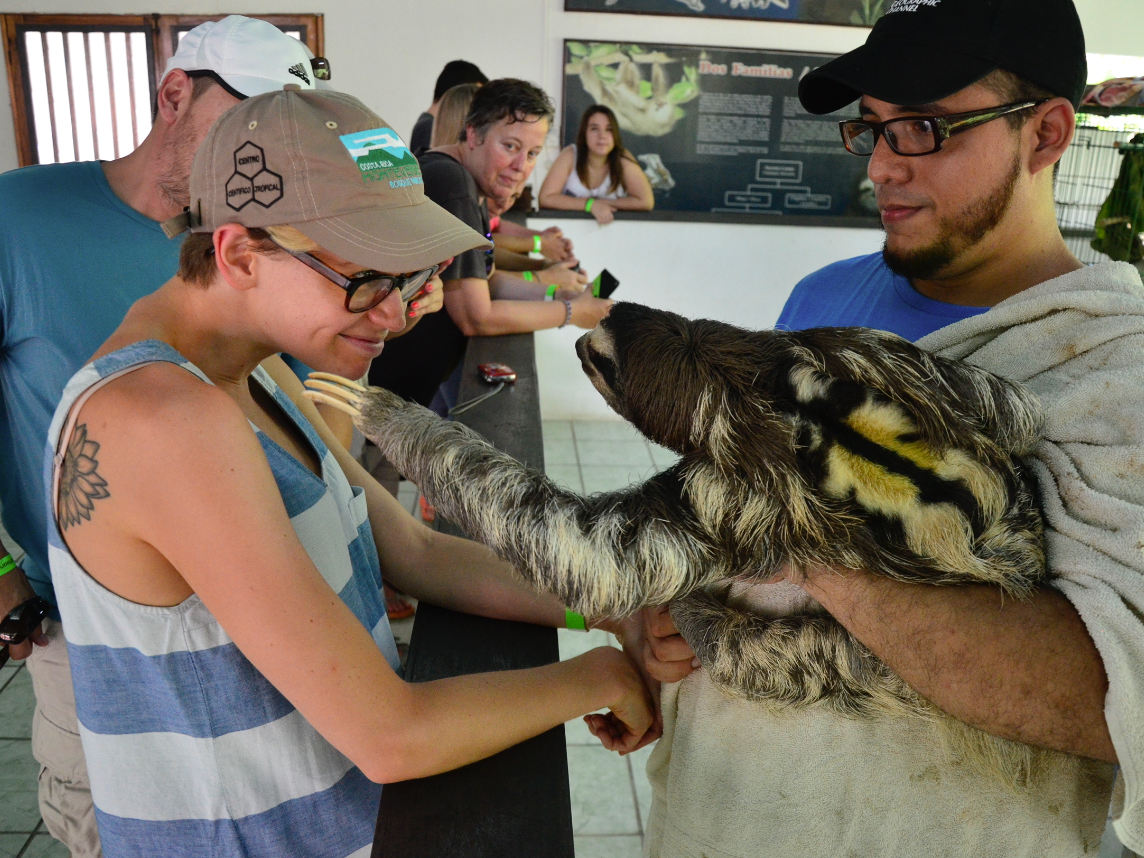- If you are ever in Costa Rica, you cannot leave without visiting the country’s only Sloth Sanctuary.
- The Sanctuary takes in abandoned and physically disabled sloths, rescuing the animals and giving them a new chance at life.
- The Sanctuary offers guided tours and the opportunity to learn about the two and three-fingered sloths who reside in the beautiful oasis.
No trip to Costa Rica is complete without a visit to the country’s only Sloth Sanctuary, a place where abandoned baby sloths and those with physical disabilities are rescued, rehabilitated, and given another chance to thrive.
In other words, it’s a place where dreams come true.
Here’s what it’s like hanging out with the sloths:
Costa Rica is famous for lots of things. Zip-lines. Coffee. Environmental tourism. I was going for the sloths. I wanted to spend a day with my spirit animal, which is known for moving so slowly that it looks like it was recorded in slow motion.
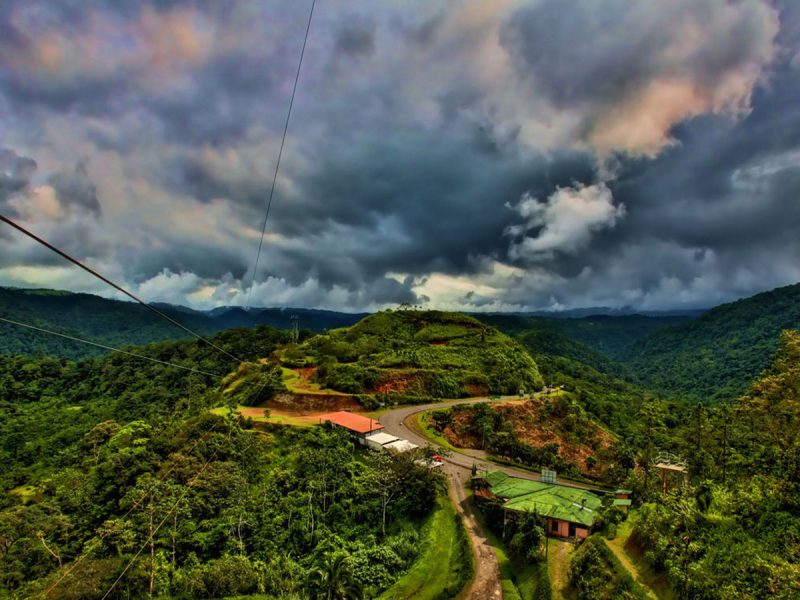
So naturally I carved out a full 24 hours to spend in the country's only sloth sanctuary (formerly known as the Aviarios del Caribe). If you're starting in the capital city of San Jose, getting to the sanctuary, on the country's east coast near Limon, is a bit of a trek.

Lucky for me, I'd been traveling up and down the country's coast for a few days by the time I planned to stop by the sanctuary. From my Airbnb, in the neighborhood of Cahuita, all I had to do was walk to the local bus depot.
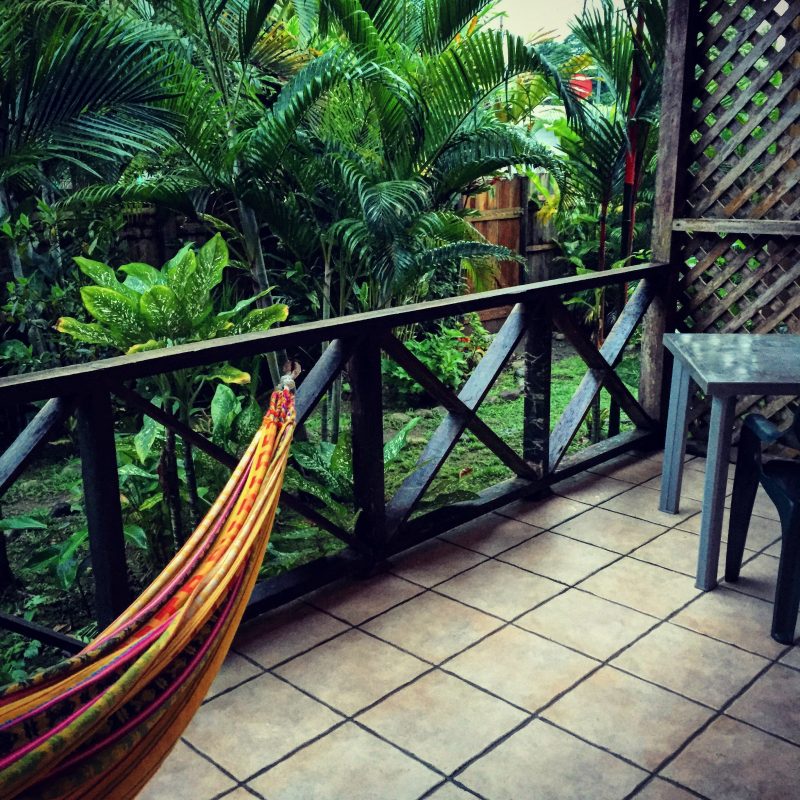
At first, when the driver told me we'd arrived, in Spanish, I wasn't sure I'd heard him correctly. There were very few signs — just a typical-looking bus stop and a whole lot of trees. Then, I saw this:

Sure enough, after crossing the street (carefully, as instructed), I ventured along a small pathway, which brought me to this:
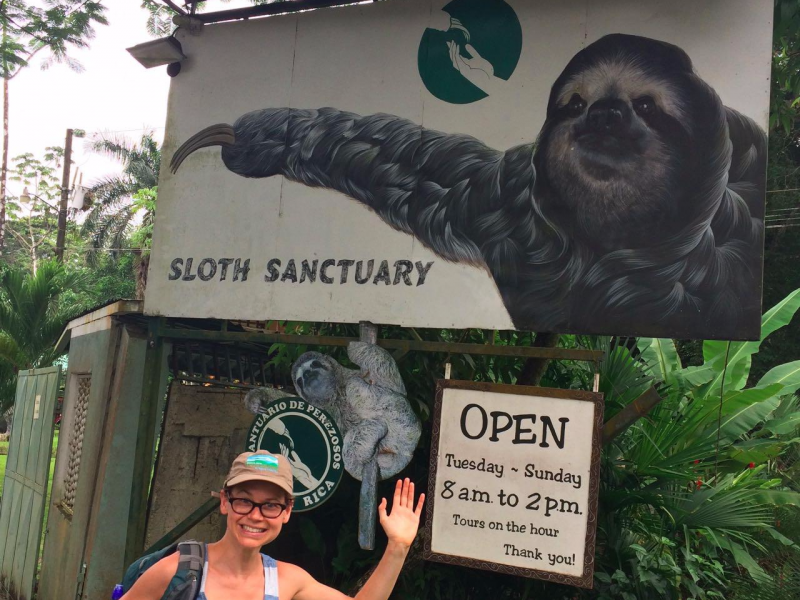
Inside the gates, the pathway widened into a large driveway, where I was greeted by this giant stone fellow. Don't worry, this creature isn't a sloth. It's a sloth ancestor — an elephant-sized ground sloth belonging to a genus 'Megatherium americanum.' The last of these creatures died out 11,000 years ago.

Source: BMC Evolutionary Biology, 2014
I'd signed up for the Buttercup Tour, named after its very first resident, Buttercup, which the sanctuary acquired in 1992. Back then, the story goes, a young girl saw a car hit and kill a sloth, and the baby was left to fend for itself.
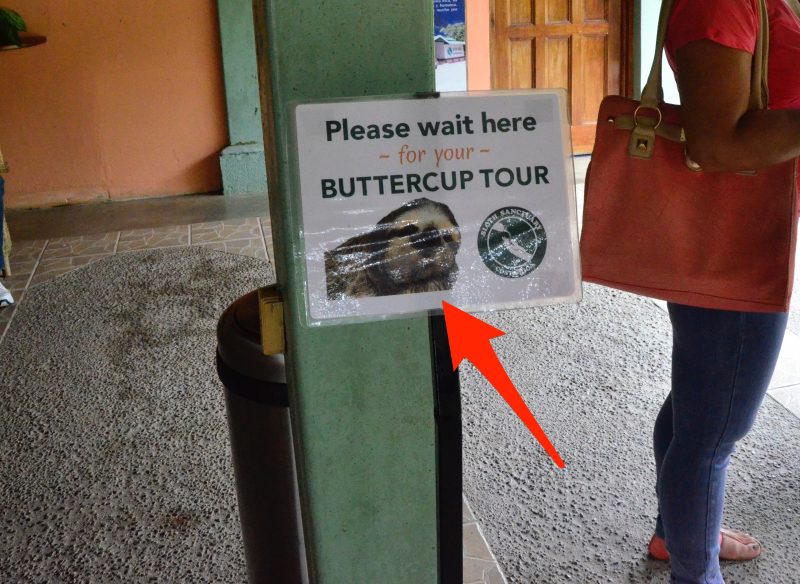
Source: BBC Wildlife, 2011
The girl brought the baby sloth to her neighbors, Judy Avey-Arroyo and Luis Arroyo. "We were the crazy gringos across the street," Avey-Arroyo, who grew up in Alaska, told the BBC. Buttercup still lives at the sanctuary. Here she is:

Source: BBC Wildlife, 2011
Although Buttercup spends a lot of time in the company of humans, the area surrounding her home is rich with wildlife. A small river runs through the grounds. The moist air is full of the sounds of birds, insects, monkeys, and other sloths of course. (By the way, they don't sound anything like you'd probably expect. The babies squeak; the adults utter a high-pitched call that echoes eerily through the trees.)
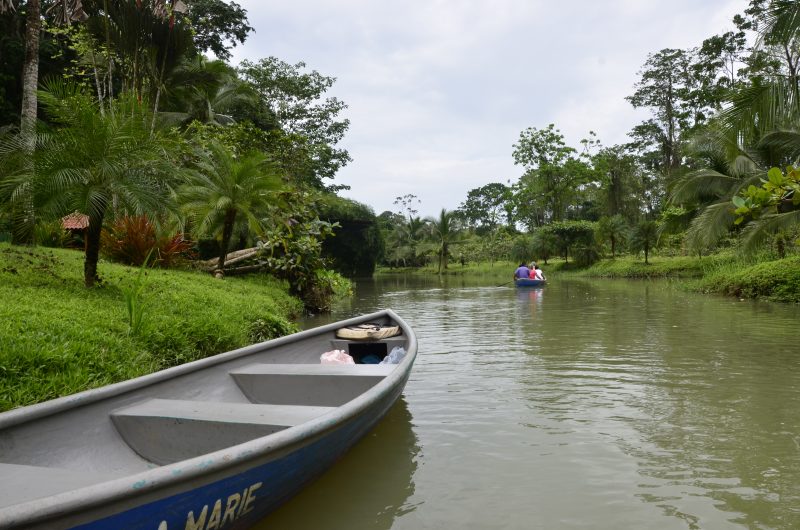
Many of the sanctuary's sloths are too young or too ill to be released back into the wild after they're rehabilitated, so they stay in habitats like the one below. Here's Millie, a Hoffman's two-fingered sloth:
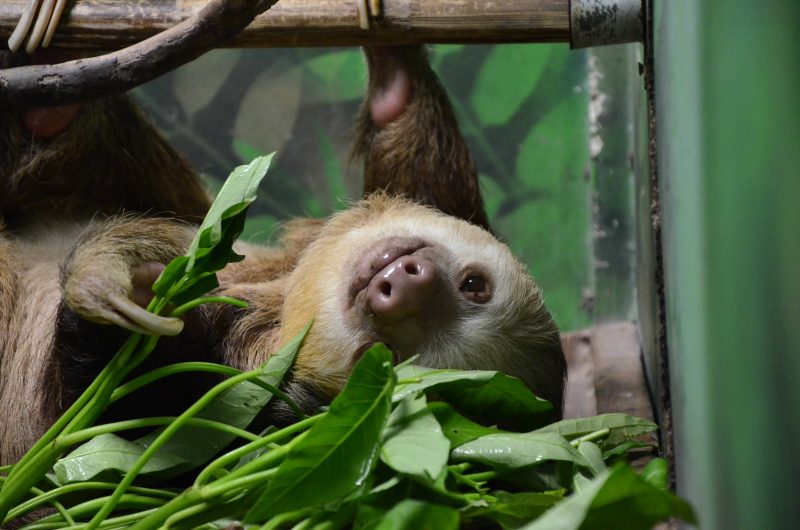
Source: BMC Evolutionary Biology, 2014
Mille and Buttercup belong to two different sloth genera, the scientific classification above species. Millie is a two-fingered sloth of the genus Choloepus. Buttercup is a three-fingered sloth of the genus Bradypus. The genera in bold below are the only ones still alive today (the rest were wiped out by extinctions):

In English, these two different groups are often referred to as "two-toed" or "three-toed," but in Spanish, they're called "two-fingered" or "three-fingered."

Some people think the Spanish phrasing is more accurate since it refers to the number of digits on the animals' fore feet (which, for humans, more closely resemble our hands) instead of their hind feet (which are more like our feet). Here's a photo of me meeting the three-fingered sloth Duggar:

Duggar is a specific kind of three-toed sloth known as a brown-throated three-fingered sloth, or 'Bradypus variegatus.' His species is the most common sloth species and thrives in Central and South America. Brown-throated three-fingered sloths can be identified by the brightly colored patterns on their backs.

Source: World Animal Foundation
Other sloths at the sanctuary who are younger or weaker get special attention. If they aren't ready for the independence of the habitats like the ones Duggar and Millie live in, they sleep here, in warm nests of blankets, until they're stronger and healthier:

One of the sanctuary's residents, Toyota, was brought to the sanctuary after being badly burned while climbing an electric wire (a frequent source of injury for sloths in Costa Rica). Although he lost the forearm, which suffered the brunt of the injury, Toyota was nursed back to health, and now hangs out in one of the sloth habitats near Millie.

Lunchtime rolled around as we were finishing our tour. Here's Millie enjoying a meal of tree leaves, which make up the majority of her diet. Like other Hoffman's two-fingered sloths, she also noshes on the occasional fruit or flower.

Source: World Animal Foundation
Soon, it was time for us to go. As we said our goodbyes, Millie kept chewing.
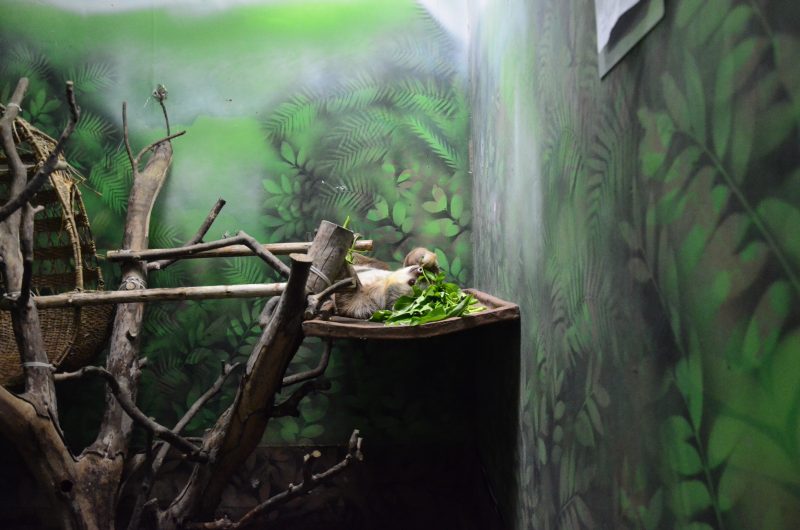
- Read more:
- Divers found fossils of an ancient giant sloth hidden in a sinkhole. The creature was 20 feet long.
- A woman who dedicated her life to saving sloths opened an adorable baby sloth orphanage in Costa Rica
- 14 animals that are surprisingly legal to own as pets in the US
- Humans once hunted and butchered giant ground sloths in South America, 12,600-year-old bones reveal

